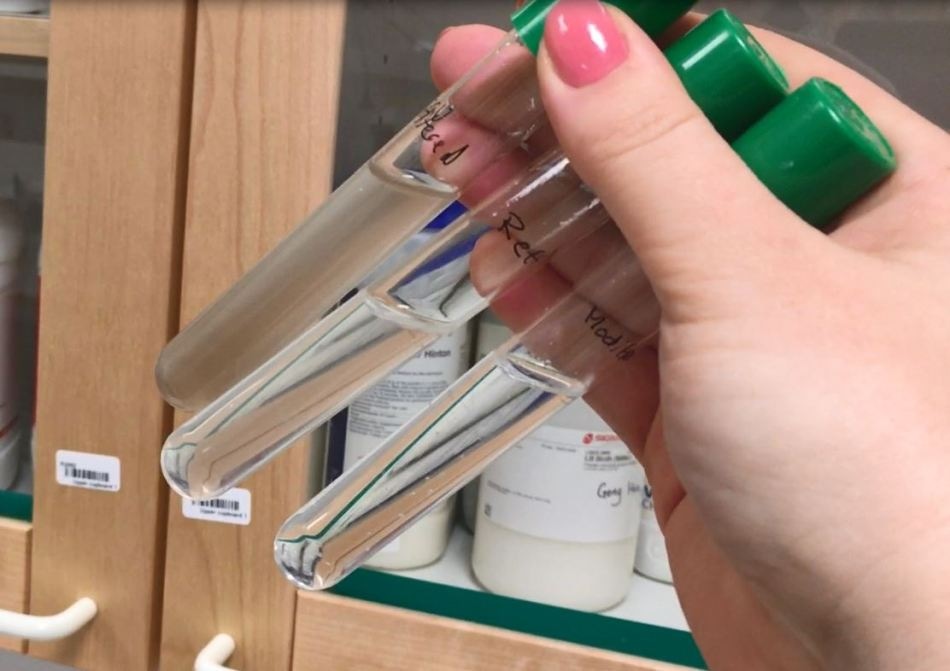Mar 21 2017
 The purified water is compared with its original source, as well as a reference sample from the tap. (Photo: KTH Royal Institute of Technology)
The purified water is compared with its original source, as well as a reference sample from the tap. (Photo: KTH Royal Institute of Technology)
Researchers from KTH Royal Institute of Technology have used wood to develop a bacteria-trapping material, which is currently being examined for use as a water purification filter. This could then be used in areas without any infrastructure or clean water supply.
The material, which integrates wood cellulose with a positively-charged polymer, is able to attract and bind the bacteria to the material surface, capturing the bacteria. It shows the potential for use in plasters, bandages, and packaging that destroy bacteria without discharging toxins into the environment.
The Swedish research team, headed by Professor Monica Ek, is examining if the material could enable portable on-site water treatment in areas that do not have any facilities or wells to meet demand.
Our aim is that we can provide the filter for a portable system that doesn’t need electricity – just gravity – to run raw water through it. The great idea is that we are trapping the bacteria and removing them from the water by our positively-charged filter. The bacteria trapping material does not leach any toxic chemicals into the water, as many other on-site purification methods do.
Anna Ottenhall, PhD student, KTH
Her co-supervisor, Josefin Illergård, has been studying the antibacterial fibers from wood cellulose for nearly a decade. “We had this fantastic material that is antibacterial and can be used in different ways, and we wanted to see how to use it in a way that truly makes a difference – a way that addresses a big problem in the world,” Illergård says.
Illergård says that when the fibers are dipped in a positively-charged polymer solution, the surface becomes positively charged. Viruses and bacteria are negatively charged and so adhere to the positively-charged polymer surface. From there, it is not possible for them to free themselves and reproduce, and hence die.
One of the advantages of surfaces covered with polymers is that bacteria will not develop any resistance.
Josefin Illergård, KTH
Once it is used, the filter can be burned.
The technology is one of many innovative ways that wood-based materials are being developed at KTH, which recently has reported progresses with see-through wood, wood cellulose-based foam, squishy batteries produced from wood, and even a polystyrene alternative from wood.
The water filter project also is one of KTH’s several ongoing water-related research projects. A new organizational unit, WaterCentre@KTH, was officially launched on World Water Day 2017 to encourage cross-disciplinary partnership and new water-related research strategies within KTH and with industry partners, public agencies, and other knowledge institutions.